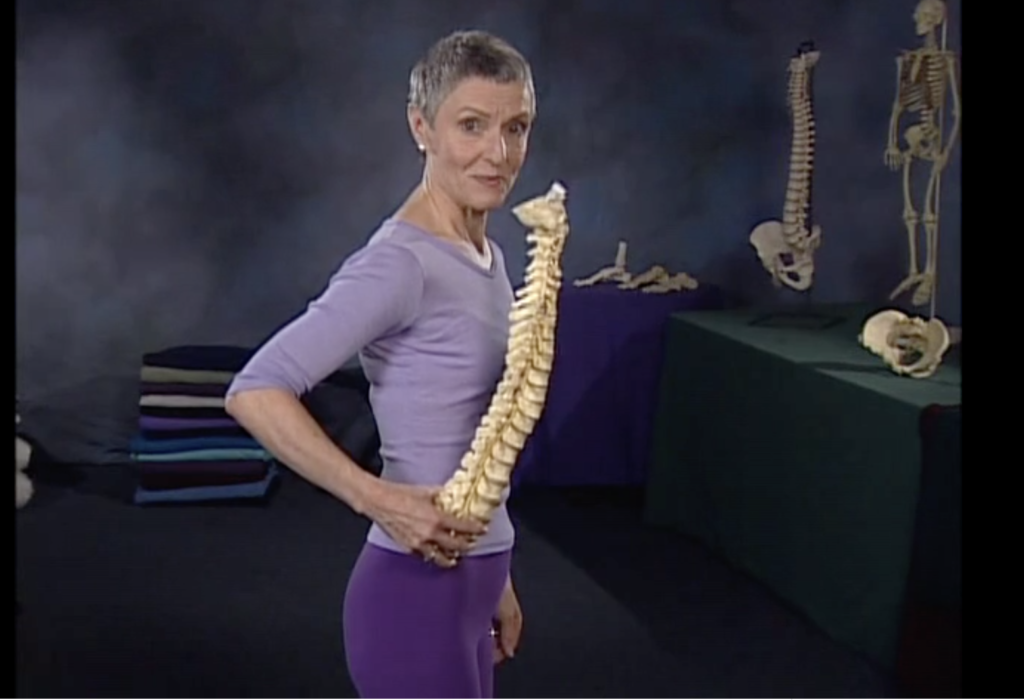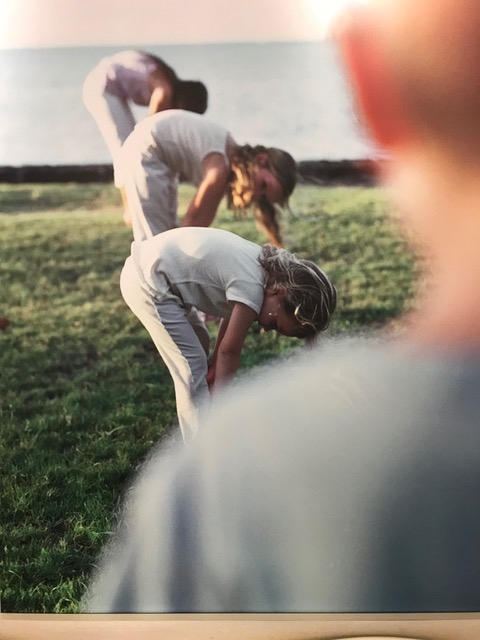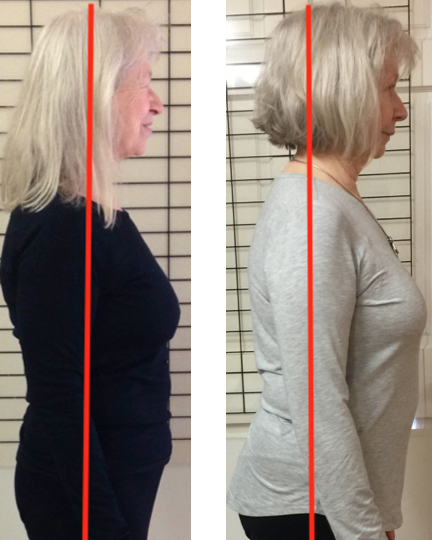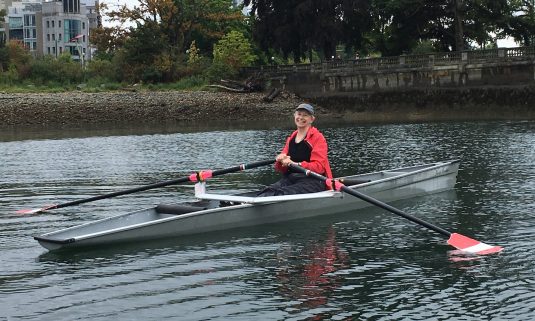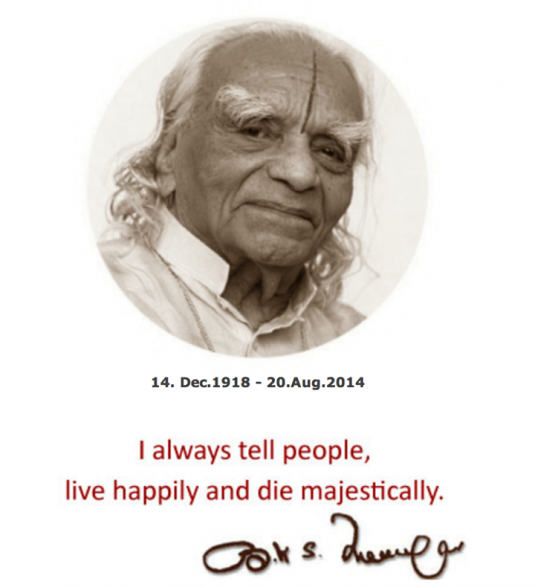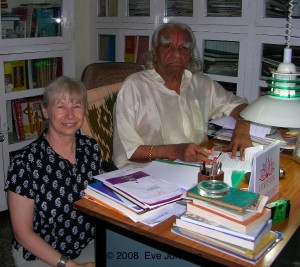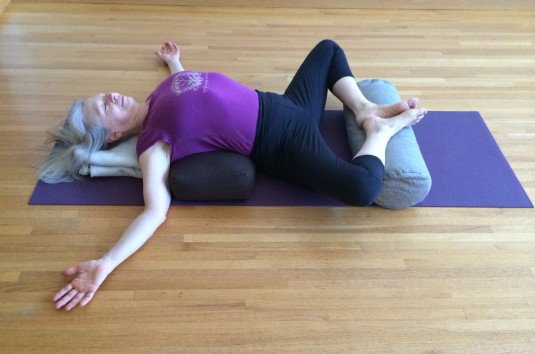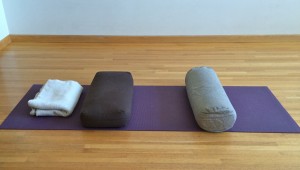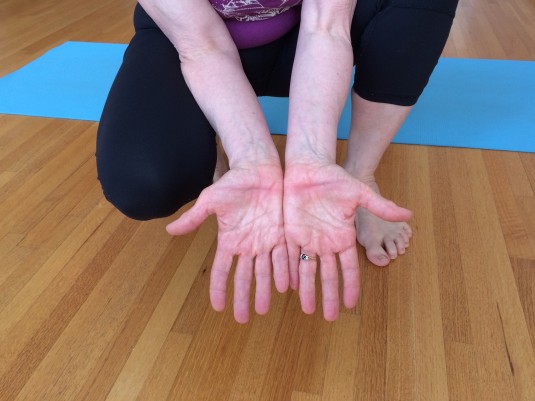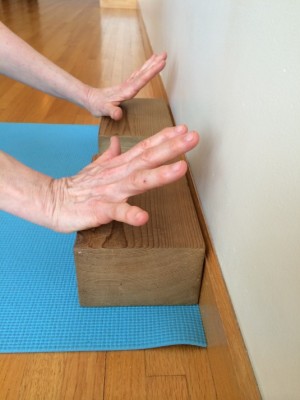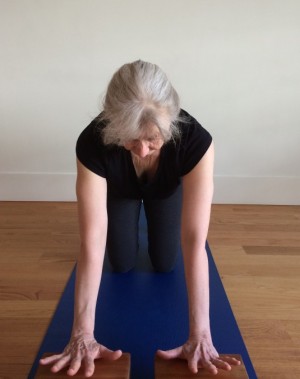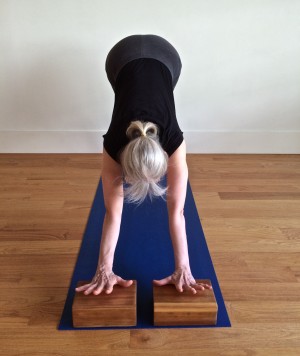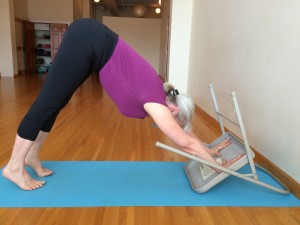
I had three months off teaching this summer, mostly because I spent June in India, studying at the Iyengar yoga institute in Pune.
Anyone who has studied at RIMYI knows that a month there doesn’t really qualify as a holiday. Not with a two-hour class and a three-hour practice six days a week, along with observing as many classes as you can absorb. Still, I wasn’t teaching, so let’s call it a vacation.
On the third weekend of my stay, I escaped the noise and pollution of the city and went to KARE, an Ayurvedic spa located in the hills above Mulshi Lake, about 90 minutes outside Pune.
The countryside was lush and gorgeous, and washed with full-on monsoon rains. In two days, I had two consultations with an Ayurvedic doctor, a nutrition consultation, four treatments, including Shirodhara, – a full body massage followed by warm oil pouring in a steady stream over my forehead for what was either 20 minutes or a float in eternity – and four Iyengar yoga classes.
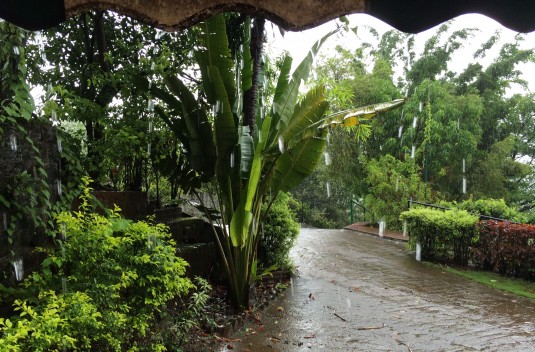
Monsoon beauty at Kare.
Both mornings started with a two-hour “dynamic yoga” class at 7 a.m. Both classes began with 10 rounds of sun salutations, which were followed by a very welcome rest in face-down Savasana. Then we went on to other poses.
It’s been a very long time since I did 10 sun salutations in a row. In fact, looking back, I can’t remember a time when that was ever a regular part of my practice, even during my days as a Vijnana student.
At first what I noticed was how much this simple practice lifted my energy. So when I came home, a week later, I kept on doing it, starting every practice with 10 sun salutations.
Let me just say here that these are modified sun salutations.
I wear a brace on my left arm, which helps keep unhealthy strain out of my vulnerable inner elbow. I do some preparatory work getting my inner upper arm muscles to wake up and work for me. And on the advice of Gulnaaz Dashti, whose classes I took on Sunday mornings in Pune, I do a bent-knee Chatturanga (yoga pushup), because I want to protect my shoulders.
I was never a light jumper. Now that I’m older, jumping feels jarring to my eyes, so I step, imperfectly. Even after all these years, the left leg remains less willing to step forward than the right.
So where does the magic come in?
I can immerse myself in this practice, so much so that I need to count on my fingers so I don’t lose track. When I’m done, I feel like I’ve woken up my body, united it with my breath, and settled my mind, all in less than 20 minutes. And as I work with it, day after day, my work in the poses gets deeper.
Some days, for example, I concentrate on the chest opening.
My habit has always been, in downward dog, to look through to my feet right away. Now I spend more time in the preparatory part of the pose, eyes looking either to my hands or the end of the mat, forearms lifting, shoulders stable, bringing my thoracic spine toward my thighs. I do my best to keep that opening as I move through the rest of the cycle. By the 10th time through, my normally stiff upper back is alive and mobile.
Other days, I work for abdominal support, finding the actions that lift my belly toward my spine.
Often, in a flashback to June’s classes at the Institute, I hear the voice of Prashant Iyengar, Guruji’s son, saying, “Exhale deeeeeper. Exhale extra-ooooordinarily deeeeeper.” So I do.
Then, if I strengthen one leg action in downward dog after the exhalation and before I inhale (perhaps rolling the buttock creases at the tops of the thighs away from each other, or pushing the top front thighs back), my belly sucks back and up like the tide going out before a tsunami. I do my 10 cycles working to keep that lift and connection as I go.
I can focus on the work of my arms, the work of my legs, or both. Or I can put all of it together at the beginning, and then let myself be absorbed into the meaning of the cycle, bowing (namaskar) to the sun (surya), paying homage to the source of life on earth.
More yoga magic: a few weeks ago I was immersed in a quiet forward bends practice when out of the blue, Eka Hasta Bhujasana suggested itself. EHB is a hand balancing pose. From a seated position, you bring one leg over its own shoulder. The other leg stays poker straight on the floor. Then you press both hands down by the side of your pelvis and lift, buttocks up off the floor, straight-leg thigh parallel to the floor.
I have always struggled with this pose. When I taught it for Jr. I certification, I used bricks under my hands because it was the only way I could achieve lift-off. So I tried it with bricks first. But the pose felt unusually strong. So I put the bricks aside, and lifted up without them.
The pose was a time-limited offer – a second or two at most. But there it was, a dramatic improvement in a tough pose. We do, yes, have to change our practice as we age. But happily it isn’t all about dwindling strength and lost capabilities.
As I gear up for September’s new session of classes I intend to keep on saluting the sun, even as it gradually spends less time here in the northern hemisphere. I’ll be urging my students to join me, and hope you’ll consider it too.
More resources:
If sun salutations are new work for you, start with one or two rounds and work up. Check out this video from the Yoga Journal for a modified sequence.
For beginners, the hardest part of sun salutations can be stepping forward from downward facing dog. Look here for advice on how to make it easier.
For an excellent article on the history, meaning and practice of Sun Salutation by Richard Rosen, go here.
And check out will-power expert Kelly McGonigal’s story on the devotional aspects of the series.

